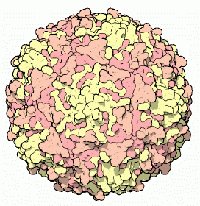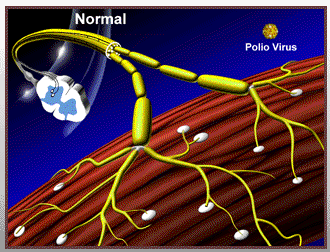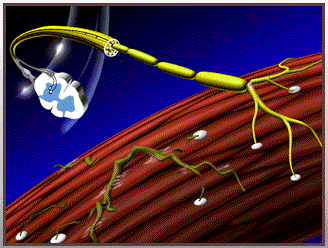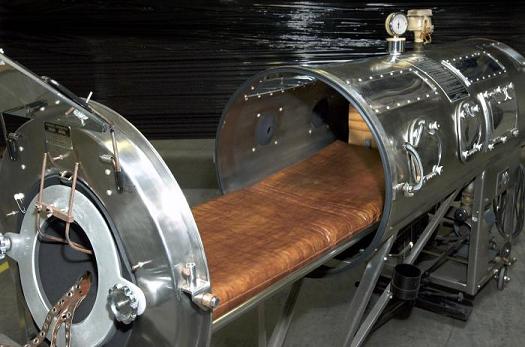

Poliomyelitis
Navjot Chaudhary

Poliomyelitis, commonly known as polio, is a highly infectious viral disease which invades the central nervous system (CNS), and may cause total paralysis within hours. Although this devastating disease can occur at any age, 50% of cases occur before the age of three years old. The virus is introduced into the body through the mouth, and multiplies in the intestine. Once it becomes established in the intestine, it can enter the bloodstream and subsequently spread along nerve fibers. The virus is shed intermittently in faeces for several weeks, facilitating rapid spread throughout a community.
Transmission
Polio is transmitted through person-to-person contact, and the virus can enter the environment through feces of infected individuals. Individuals who have been vaccinated may still become infected albeit asymptomatically and serve as carriers. Although these people may not develop polio, they can pass it onto to others, particularly in conditions of sub-standard hygiene. The disease may infect thousands of people, before the first case of polio paralysis emerges. Hence, the World Health Organization (WHO) considers a single confirmed case of polio paralysis to be evidence of an epidemic, especially in countries where very few cases occur.
Clinical Manifestations
The initial clinical presentation of polio may include fever, fatigue, headache, vomiting, stiff neck and pain in the limbs. Less than 1% of infections lead to irreversible paralysis, which usually occurs in the lower limbs. Among those paralyzed, the mortality rate is 5 to 10% once respiratory muscles become immobilized. However, most people infected with polio remain asymptomatic.
Pathophysiology of Acute Flaccid Paralysis (AFP)
As the virus spreads along nerve fibers, it destroys the nerve cells (motor neurons) which activate muscles. These nerve cells cannot regenerate and the affected muscles cease function. The lower limbs are affected more often than the upper limbs, and this loss of function leads to acute flaccid paralysis.


The effects of the Polio virus on nerve cells. The image on the left shows a normal neuron and the image on the right shows a non-functioning neuron damaged by the Polio virus.
More extensive paralysis involving the trunk, thorax and abdomen, can result in quadriplegia. In the most severe cases, polio attacks motor neurons of the brain stem which reduces breathing capacity, increases difficulty swallowing and impedes speech articulation. Without respiratory support, this polio may result in death.
Management
Since there is no cure for polio, management predominantly includes symptom relief. Moist heat, physical therapy and muscle relaxants are used to stimulate muscles and to provide relief from pain related to spasticity. While this improves mobility, there are no interventions capable of reversing paralysis. The need to facilitate respiration is critical in patients with paralytic polio. In the 1940s and 50s, patients with respiratory muscle paralysis were immobilised inside "iron lungs."

An iron lung.
These were large metal cylinders that operated like a pair of bellows to regulate their breathing and increase survival. This intervention has largely been supplanted by the positive pressure ventilator.
Prevention
Since there is no cure for polio, implementing preventative measures is of paramount importance. Until the 1950s, polio crippled thousands of children every year. Soon after the introduction of effective vaccines in the late 1950s (IPV) and early 1960s (OPV), the incidence of polio was curbed and nearly eliminated as a public health problem in industrialized countries. In the 1970s, routine immunization with OPV as part of national immunization programs (Expanded Programme on Immunization; EPI) was introduced worldwide, including many developing countries. Multiple administrations of the vaccine have markedly reduced the risk of developing paralytic polio. more >
Navjot Chaudhary is a final year medical student at McMaster University in Ontario, Canada. She has a strong interest in neuroscience, pediatrics and international health.
OnSET is an initiative of the Science Communication Program
URL: http://www.onset.unsw.edu.au/ Enquiries: onset@unsw.edu.au
Authorised by: Will Rifkin, Science Communication
Site updated: 7 Febuary, 2006 © UNSW 2006 | Disclaimer
OnSET is an online science magazine, written and produced by students.
![]()
OnSET Issue 6 launches for O-Week 2006!
![]()
Worldwide
Day in Science
University
students from around the world are taking a snapshot
of scientific endeavour.
Sunswift
III
The UNSW Solar Racing Team is embarking
on an exciting new project, to design and build the
most advanced solar car ever built in Australia.
![]()
Outreach
Centre for Sciences
UNSW Science students can visit your school
to present an exciting Science Show or planetarium
session.
![]()
South
Pole Diaries
Follow the daily adventures of UNSW astronomers
at the South Pole and Dome C through these diaries.
News in Science
UNSW is not responsible for the content of
these external sites